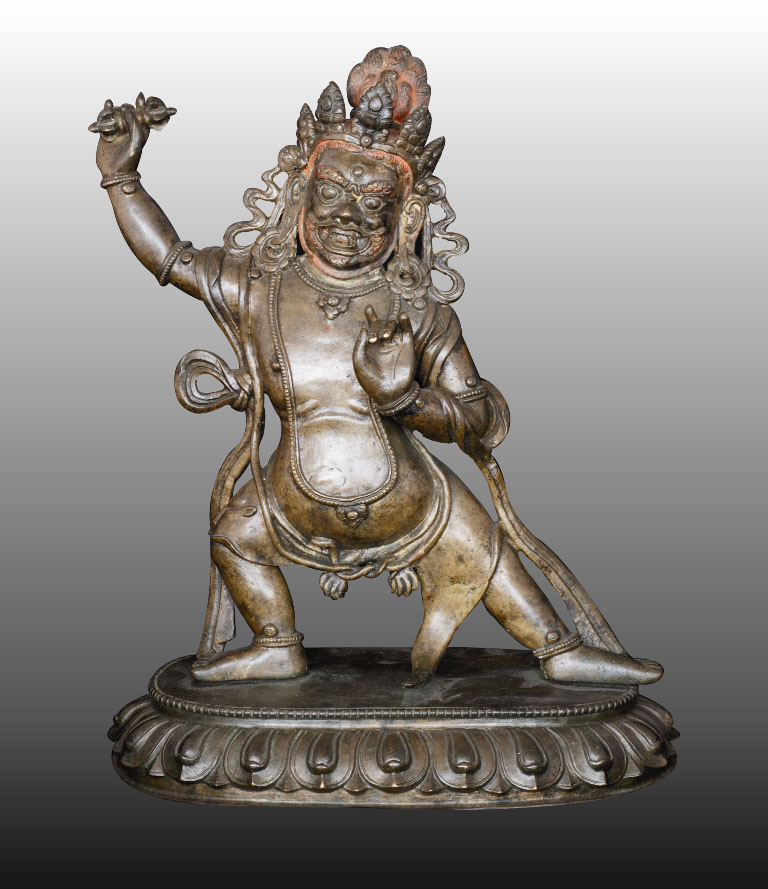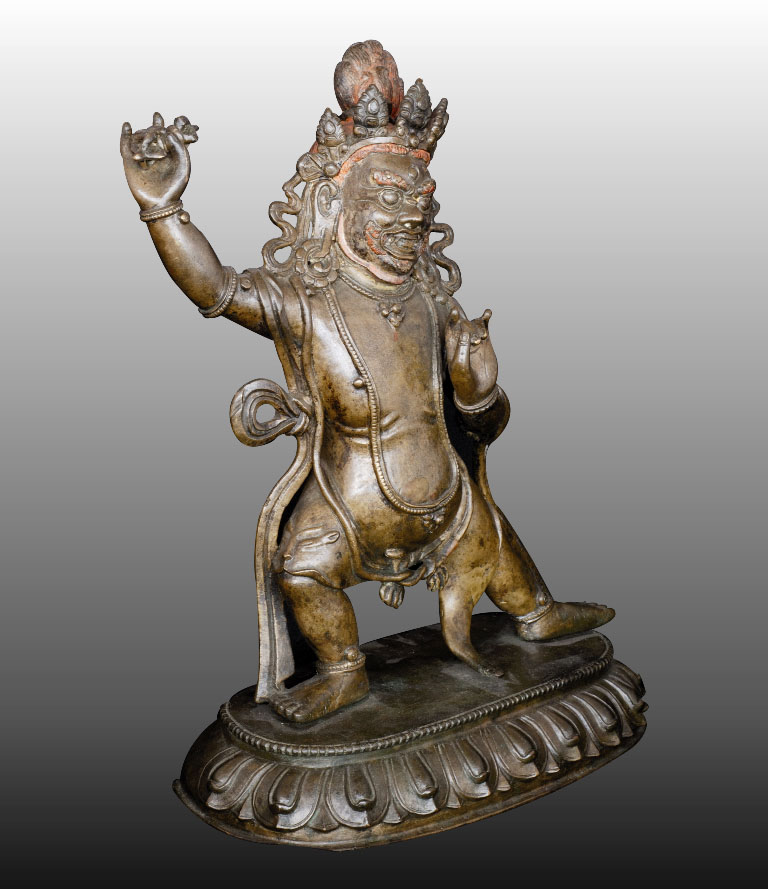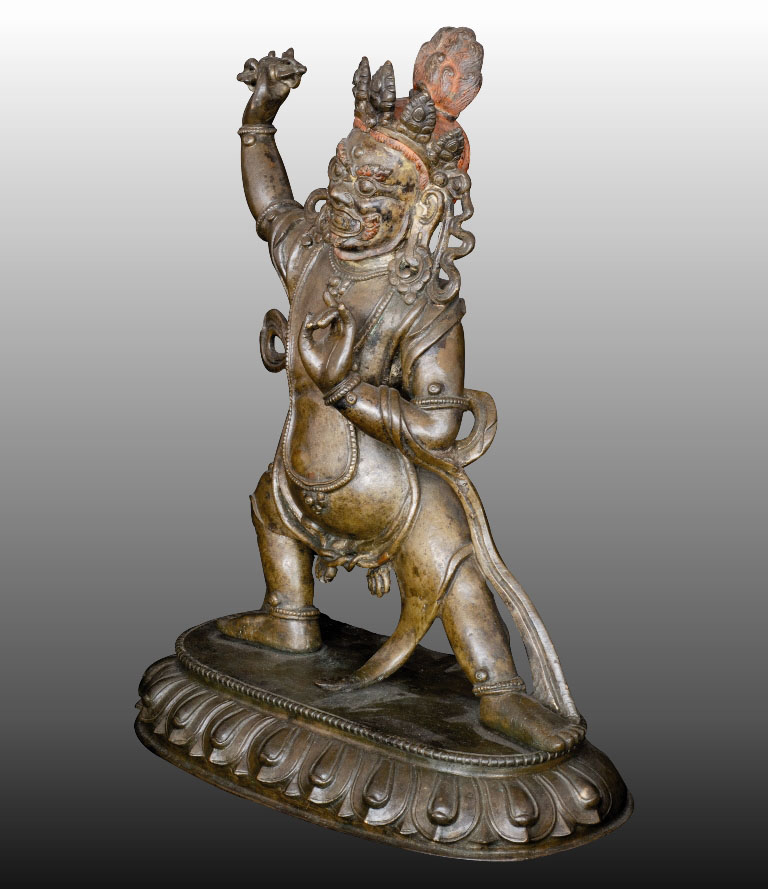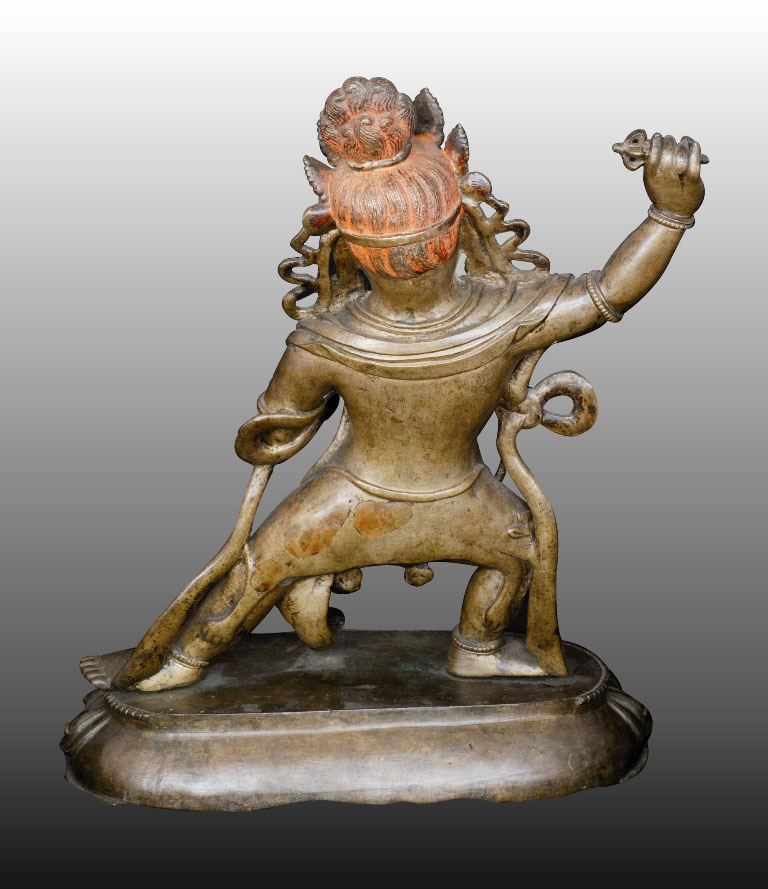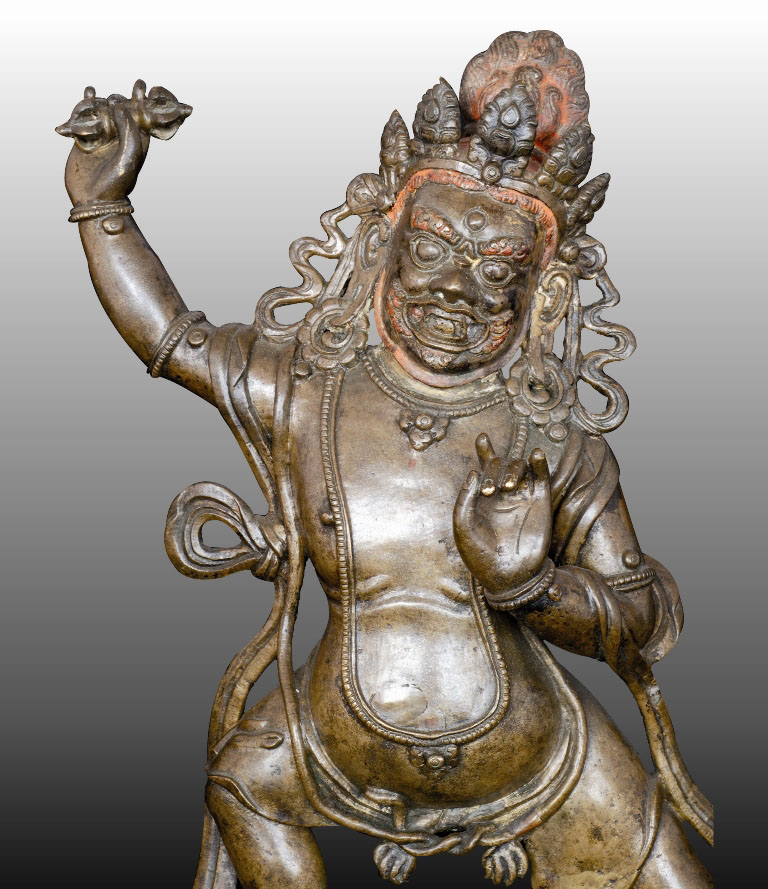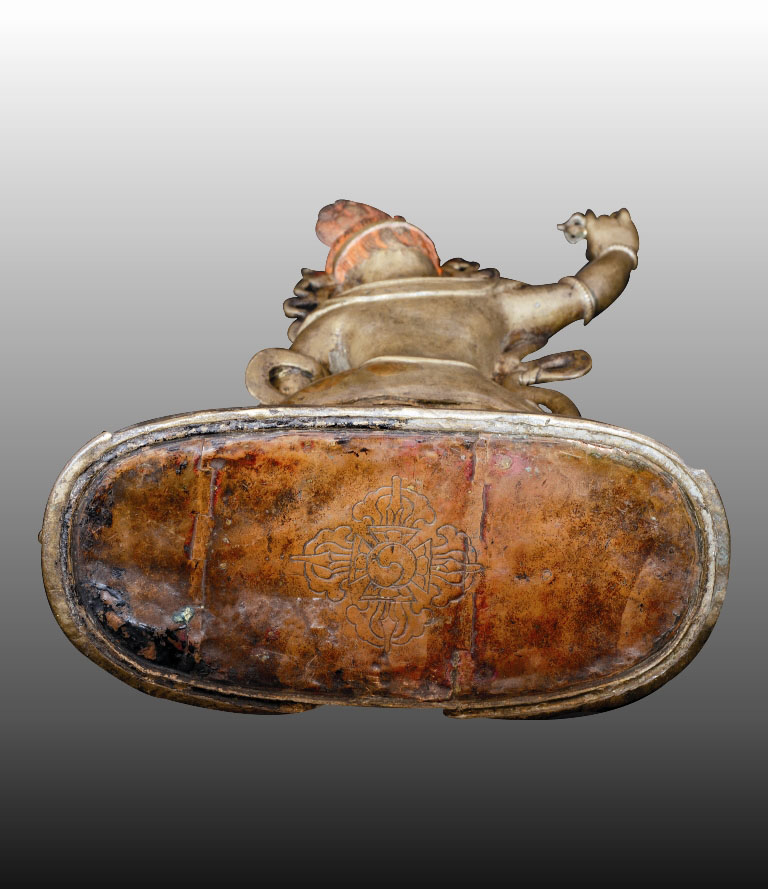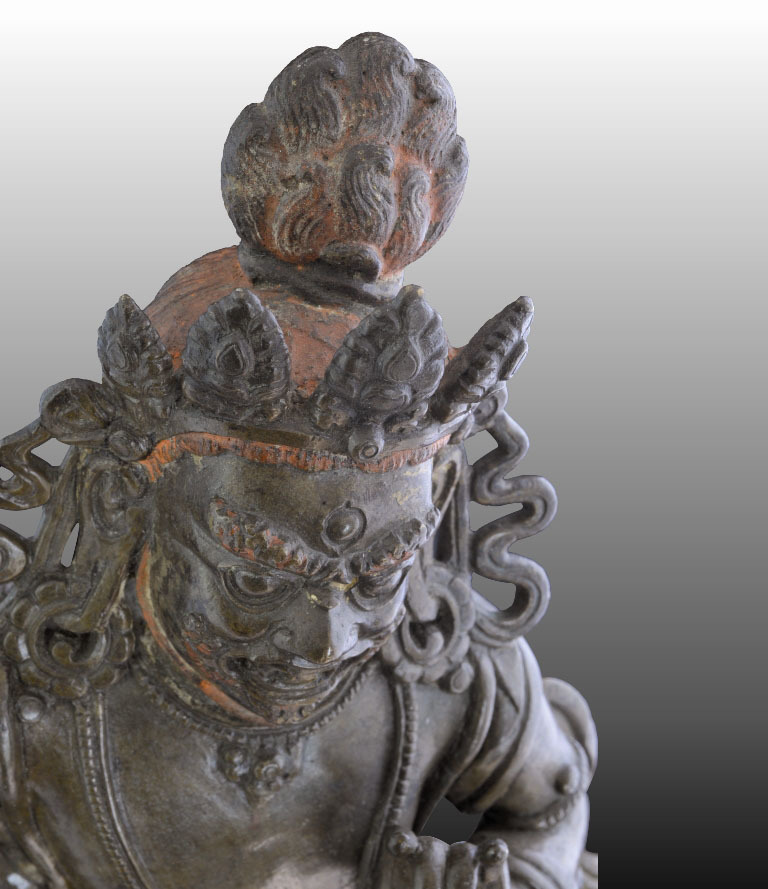|
|
«« go back
Vajrapâni
Tibet - Copper alloy - Height 33 cm. - 17th-18th century
The career of the Bodhisattva Vajrapâni (“Vajra in Hand”), the image of whom is presented here, is extremely interesting from the doctrinal point of view. Vajrapâni was originally a yaksha, a minor deity, whose role was to protect the Buddha Shâkyamuni. This is probably by virtue of his characterizing emblem, the vajra or thunderbolt sceptre, the primary attribute of the Vedic god Indra, called rdo-rje in Tibetan, meaning “lord of the stones”. This refers to diamond, the hardness and transparency of which make it a symbol of indestructibility and purity.
In the tradition of the Great Vehicle, Vajrapâni and Padmapâni (see nos. 2 and 3) have appeared beside the image of the Buddha Shâkyamuni as Bodhisattvas since the earliest centuries of our era. Vajrapâni leads a wellknown group of sixteen great Bodhisattvas, all depicted in their peaceful appearance. However, when not in that group he is usually depicted in his wrathful form, with a vajra in his right hand, to underline his function as Buddha’s fierce guardian. During the course of the history of Buddhism, Vajrapâni’s importance grew at the same rate as that of the vajra. Initially considered a weapon in the hands of a demi-god guardian of the Buddha, the vajra came to symbolize the absolute power of the condition of the Buddha. In particular, this symbol was adopted by the esoteric schools which characterized the last stage of the history of Buddhism, called Vajrayâna (“Vehicle of the Vajra”) to distinguish them from the previous ones(1). Notwithstanding his ascent to the rank of Bodhisattva, Vajrapâni generally kept his ferocious, stocky appearance of guardian of the doctrine, making him considerably different to his colleagues par excellence, Avalokiteshvara and Manjushrî. Vajrapâni subsequently took on the epithet of Vajrasattva (“Vajra Being”), which refers to his perfect Enlightenment (2). Later the Five Cosmic Buddhas were represented with a single epiphanic shape called Vajradhara (“Holder of the Vajra”) and regarded as the Primordial Buddha (“Âdibuddha”).
The style of this image is related to that of statues pro- duced during the 17th and 18th centuries during the peri- od of the Qing 3 dynasty in China. (1) Erberto Lo Bue, Immagini divine e spazi sacri, in Erberto Lo Bue - Chiara Bellini, Arte del Ladak. Tesori di arte buddhista nel Tibet indiano dall’XI al XXI secolo, Jaca Book, Milano 2011 (forth- coming).
(2) David Snellgrove, Indo-Tibetan Buddhism. Indian Buddhists & Their Tibetan Successors, Shambala, Boston 1987, p. 136. 3 Ulrich von Schroeder, Indo-Tibetan Bronzes, Visual Dharma Publications, Hong Kong 1981, pp. 546-547, figg. 155A, 155B, 155C. For a similar Bronze figure:
Terrifying Deities of Vajrayȃna Buddhism Divinités Terribles du bouddhisme Vajrayȃna Prof. D. I. Lauf N.2 1978 pp.47-67-68 n° 30 Édition-distribution Paris 1978 L’ASIATHÈQUE 6, rue Christine 75006 Paris
|
